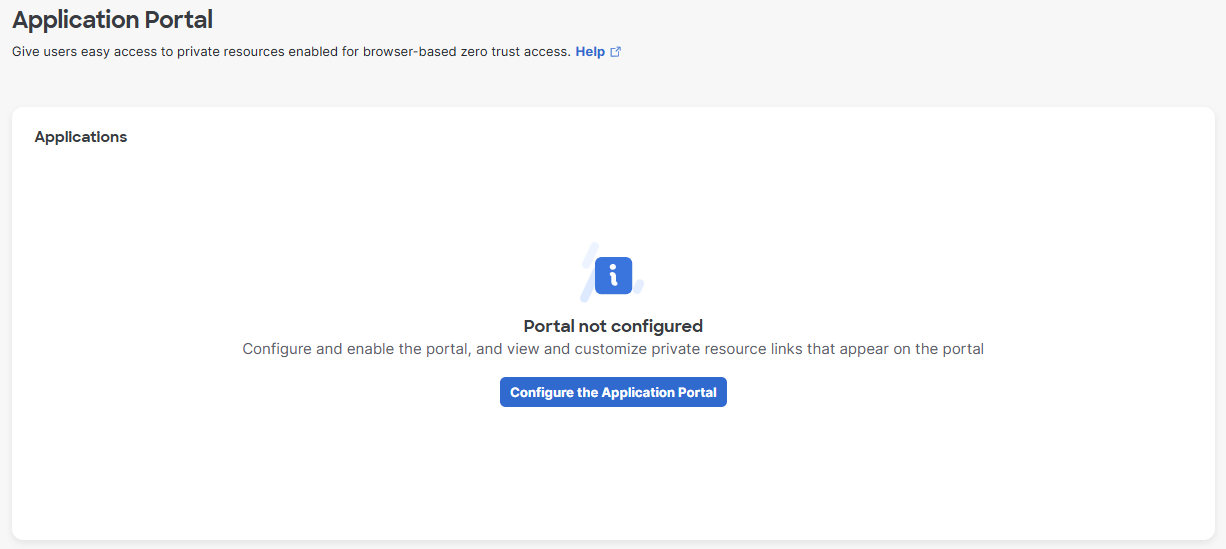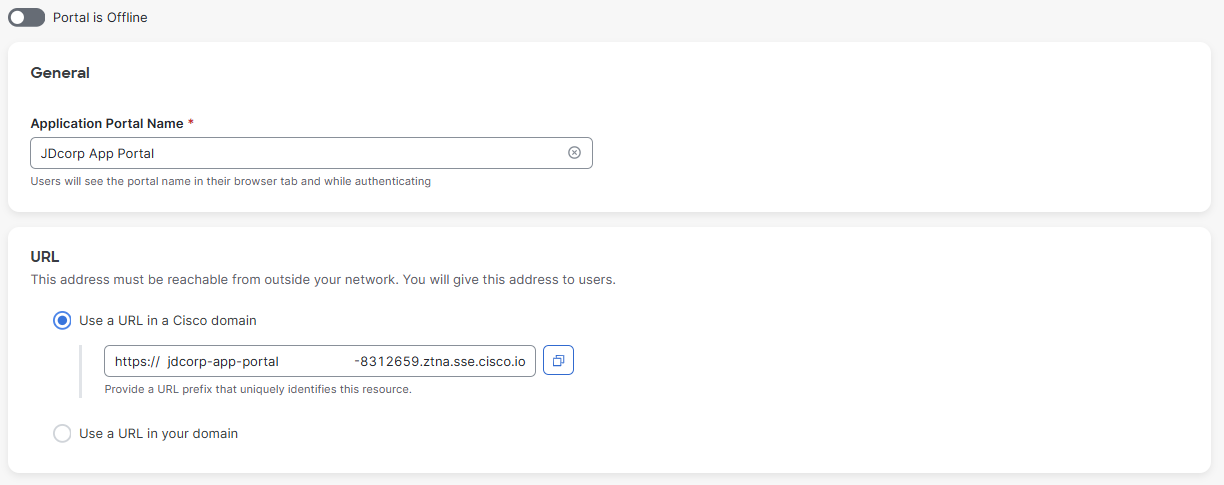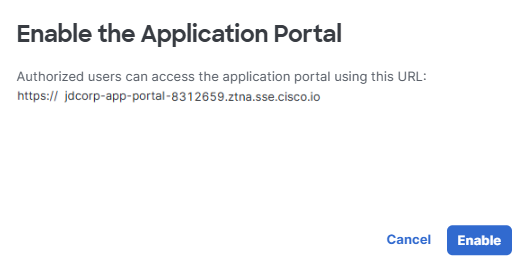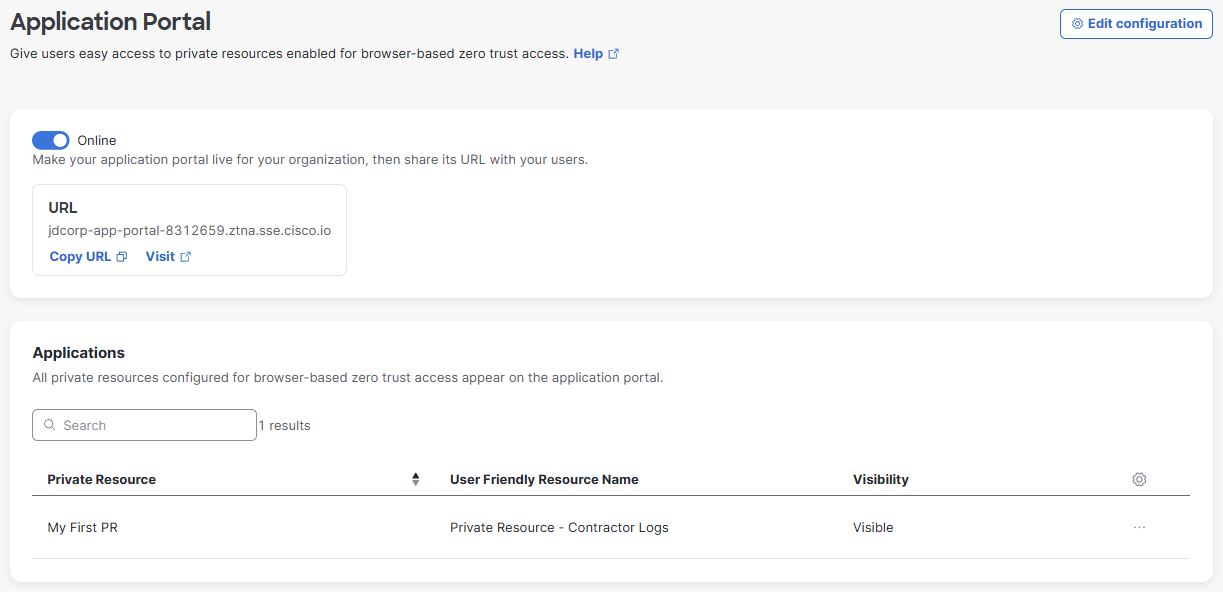Application Portal for Zero Trust Access Browser-Based User Access
Provide your users with an application portal that displays links to private resources that are enabled for browser-based Zero Trust Access.
If you do not set up this portal, you must give browser-based users a special link for each resource. These links are created during private resource configuration.
The application portal lets you give users just the one URL for the portal, simplifying browser-based user access to these resources and streamlining administrative overhead.
All private resources that are configured to appear on the portal will be visible to all users who have access to the portal.
Table of Contents
- What Users Experience
- Requirements for Users and User Endpoint Devices
- Prerequisites
- Procedure
- (Optional) Modify Settings
What Users Experience
- Users point their browser to the portal URL that you provide.
- Users sign in to Zero Trust Access.
- The user sees all resources that are configured to be displayed in the portal.
- The user clicks an application to open a new browser tab with that resource.
Requirements for Users and User Endpoint Devices
- Supported browsers
- Cisco Secure Client is NOT required on user devices.
Prerequisites
- If you will upload a company logo for the portal or logos for applications, create or obtain graphics that meet these requirements:
- File type: PNG, transparent background recommended
- Size: 250 x 150 pixels
- All configurations required for browser-based zero trust access to a private resource must be completed before users can use the portal. This includes but is not limited to private resource configuration, posture profiles, user authentication, and access rules. See Configure Browser-based Zero Trust Access to Private Resources.
Procedure
-
Enable and configure the Application Portal:
-
Navigate to Resources > Destinations > Application Portal and click Configure the Application Portal.

-
Enter an Application Portal Name and URL for the portal. The portal hostname/URL and alias must be unique.

-
Enable the portal by sliding the activation toggle to right.

-
Click Save to enable the configured Application Portal. The server identity certificate should be signed by a public certificate authority unless you will install the validating root certificate in the trust store of user endpoint devices.

-
-
Configure each Private Resource that you want to appear on the portal:
- Enable browser-based Zero Trust Access.
- Select the option to display the resource on the application portal.
- Configure the application portal name and optional logo.

-
Create at least one private access rule to grant authorized users access to the portal itself.
- In the Destinations box, choose Select Destinations > Private Resources and select the Application Portal Name that corresponds to the portal you defined.
-
Ensure that the toggle at the top of the Application Portal configuration page is set to Online.
-
Distribute the portal URL to your users.
(Optional) Modify Settings
- After the portal is configured, you can view the private resources that have been configured to display on the portal, and optionally edit display settings.
- To modify the portal configuration or certificate, click the Edit Configuration button in the top right corner of the Application Portal page.
- If you disable the portal (using the Online toggle at the top of the page), users can continue to access private resources if they have the direct URL that is defined for browser-based zero trust access on the resource's configuration page.
Allow SSH and RDP Access to Private Resources < Allow SSH and RDP Access to Private Resources > Get Started with Network and Service Objects
Updated about 2 months ago
